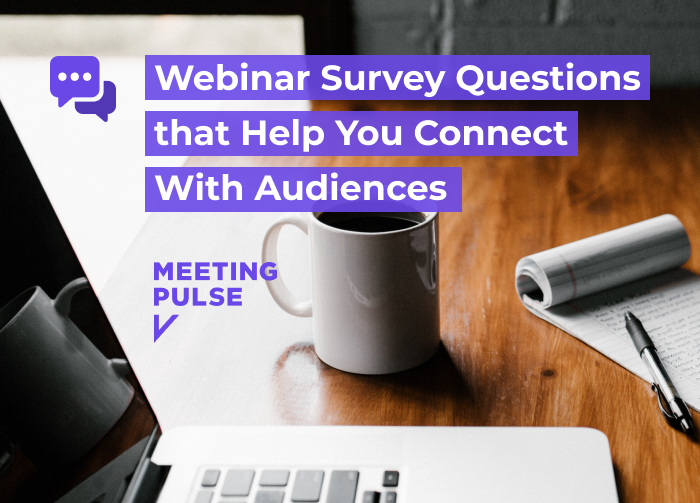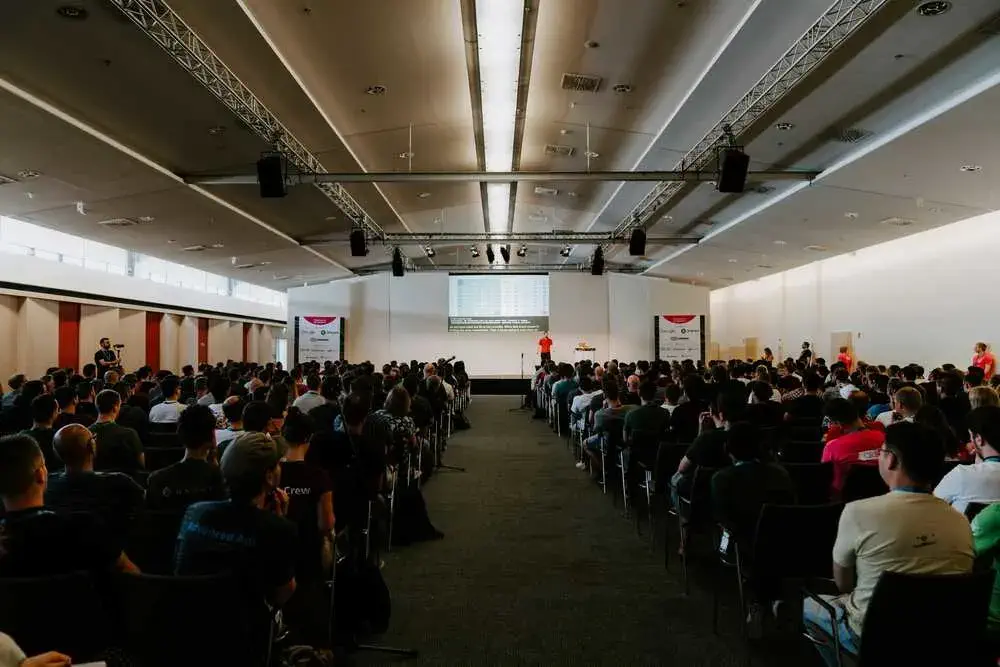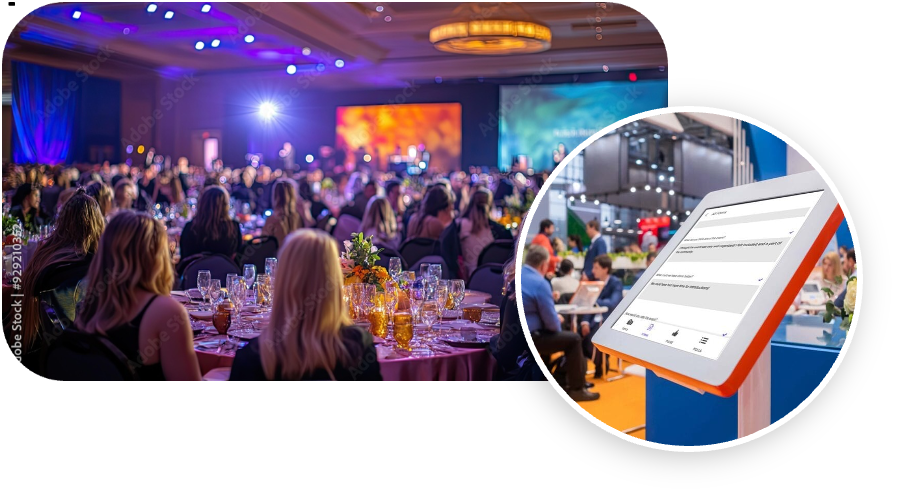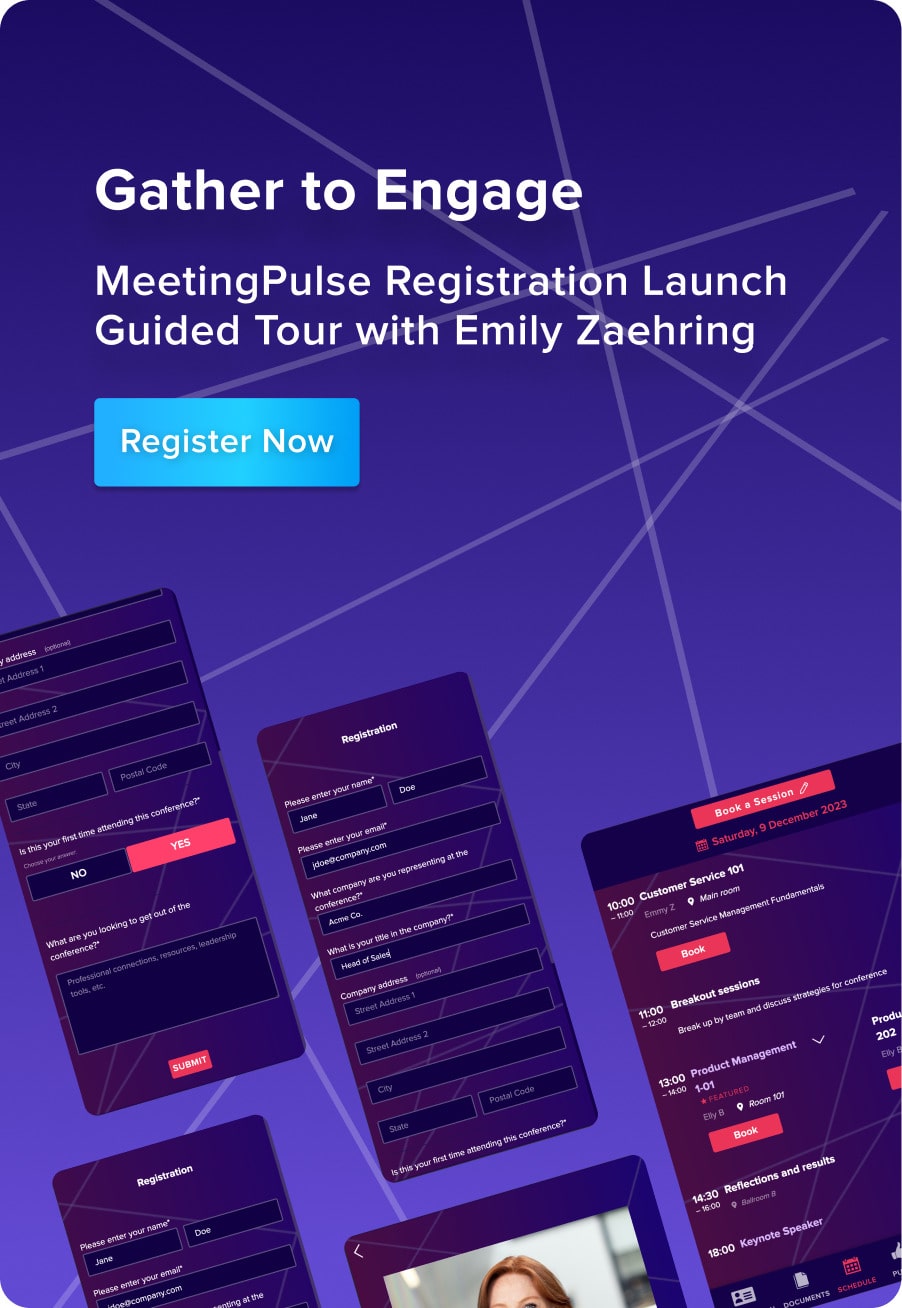There are many good reasons to use webinar survey questions, and no shortage of opportunities to engage an audience with a survey. Here are some good examples:
- As soon as your participants complete their registration process, to assure their early engagement with the topic.
- As they arrive, to see what they already know about your webinar content and help you tailor your presentation to them.
- At different stages during the webinar, to ask them about any muddy points.
- After the webinar, to see if your content met their expectations and to ascertain what did and didn’t go well.
The savvy use of surveys can help you to improve both the quality of any given webinar and the value of future events to your audience.
And if you ask the questions in your survey in just the right way, you’re likely to hear your audience’s ideas for topics to cover in future webinars. There are some basic rules:
- Start slowly
- Keep your questions short and precise
- Don’t offer too many choices
- Learn from the responses to each survey
In the next few minutes, you’ll learn about best practices for webinar surveys, including examples of questions that you’ll want to ask before, during, and after your virtual event.
The timing
The timing of your questions is important. You’ll want to plan ahead and prepare questions to survey your webinar participants at just the right moment.
Attendee satisfaction is an important thing to survey, at all points. You might consider sending a pre-webinar survey in an email, a few days before your online event. It can tell audience members a bit about your topic. And they might show you what they don’t yet know (and become curious to learn more about different aspects of your topic).
Then, during your webinar, you can strategically offer surveys designed to keep your audience interested.
Finally, you can send your event attendees a post-event survey. Ask for their input on the topic and for ways in which you might strengthen your next presentation. Some presenters leave time at the end of their presentation to allow participants to answer post-webinar survey questions. Others send out the survey afterward (within two hours is best!) to each of the participants. Post-event survey questions are a great way to get feedback.
A few ground rules
We’ve established the value of surveys before, during, and after your presentation. You’ll want to choose the right questions and frame them in the most direct and specific wording. Design your survey so that it can be easily read, regardless of the device that your respondent is using. Keep each survey brief, so that you don’t lose your participants’ interest. And keep your questions well-directed to each specific audience.
But how do you ask your questions? What kind of questions work best in a survey format? Well, here are some guidelines.
Before your presentation begins, tell people that you will be asking them to respond to questions. That gives technophobes a minute to get their nerve up before trying what might be a new technology for them. It’s also a good idea to assure them that the surveys will be brief and will complement their learning.
Types of webinar survey questions
To encourage responses, make the first questions as simple as possible. Consider true/false or yes/no questions at the beginning of your presentation.
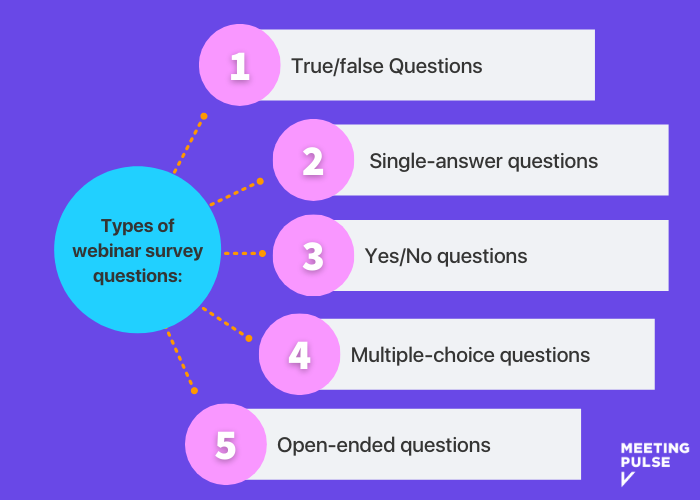
Single-answer questions
Single-choice questions require just one, simple response. They are often used to gather information, such as demographics, about your webinar participants.
Yes/No questions
These are among the simplest survey questions to answer since they offer only two possible answers. Survey developers often use yes/no questions to confirm or to refute a hypothesis that they’re considering.
Multiple-choice and ranking questions
Multiple-choice questions can take a variety of forms. They can be scale questions. For example: “On a scale from 1 (low) to 10 (high), how satisfied are you with the way in which the content of today’s webinar was presented?”
Or they can offer a number of expected responses (say, 4 or 5) and the participants can choose one.
When using multiple-choice questions, though, be sure to include “Other” as one of your potential answers. The options you offer as possible answers won’t always resonate with your respondents. Give them the option to offer a different perspective.
Open-ended questions
In open-ended questions, no answer options are offered. Instead, respondents feel welcomed to answer whatever they’d like. These questions are popular as a way to get additional feedback. Many survey writers believe that the real insights can be found in participants’ typed answers to open-ended questions. (The only drawback is that it takes a bit longer to answer than a multiple-choice or yes/no question.)
Other considerations
Now that you’ve seen some of the tools at your disposal, let’s consider other factors that go into a successful webinar survey.
Ask about the speaker
In your post-event survey, you’ll want to ask about the quality of the presenter. Responses may help you determine ways to improve the presentation before your next event.
Mobile optimized survey
Be sure that your survey is optimized for mobile devices! Industry figures indicate that more than half of your webinar participants will be on a mobile device. Be sure that you are offering a mobile-optimized survey, one that is ready for use on smartphones and touch screens. Be sure to keep your questions short and make sure that all of the possible responses appear on just one screen!
Promote your next event
One of the nicer things about a post-webinar survey is that you can use it to tell your respondents about your next webinar. If you include a link from the survey to the next event’s registration page, you can be striking while the idea is hot as they complete the survey about the webinar they just attended.
Thank your respondents
Be sure to thank respondents for taking the time to complete your survey. It shows that you value their comments, and it makes them feel valued. It’s one way to keep the event top-of-mind (and make it more likely that they share it with friends and colleagues). Multiply the effect by including a link from your message of gratitude to an interesting article or to more information on the topic.
Consider offering a reward of some sort
Sometimes, as a way to gather attendee feedback, you can offer a reward for completing the survey. Maybe they’ll get a link to more information on the webinar topic or to the transcript of the webinar. Maybe you’ll offer a gift card, entry into a drawing, or a discount on your next webinar. Offering a reward is good practice if the post-event survey that you’re asking them to complete is a long one. NOTE: If you’ve promised participants anonymity in their survey, you’ll want to consider how to offer them a reward. One way is to separate the reward delivery process from the survey. To do that, you’ll create a second survey to which they’ll be directed. It will be unlinked from their original survey responses, and they can safely enter their contact information there.
What questions should I ask?
We hear you. You like the idea of before, during, and after surveys, but you don’t know what to ask. Let’s take a look at some questions to determine which kind of questions work best.
Before
If you’re going to send out a pre-webinar survey, you’re offering your participants a chance to engage before they even attend your event. This kind of engagement is likely to pique their interest in your topic, and it will help you to know what they most want to know so that you can deliver that information to them. You might ask questions like these:
- Why did you decide to attend this webinar?
- In which topics are you most interested?
- What type of device will you be using to participate in this webinar?
- How did you hear about this webinar?
During
It’s a good practice to survey your participants at some time during the webinar itself, and questions can go in both directions. You can ask your audience if your survey questions are pertinent. You also can ask them if they have any questions for YOU to answer, giving you actionable feedback. Questions asked midstream can help you focus more precisely on just what that day’s particular audience finds most interesting. Mid-webinar questions might include:
- Is there any topic you’d like me to discuss in more depth?
- Do you have any questions for me?
- Are you experiencing any technology issues?
Post-event
Post-webinar surveys are often the ones that most excite presenters. From a survey given out in the last minutes of the presentation or sent out within two hours after the ending of the webinar, presenters can learn how the audience reacted, how they can improve their presentation for the next event, and how to contact the attendees afterward to invite them to another webinar. And post-event surveys work equally well after a live event! Questions in a post-event survey might include:
- On a scale of 1 (low) to 10 (high), how would you rate the content of today’s webinar?
- On a scale of 1 (low) to 10 (high), how would you rate today’s presenter?
- Did the webinar match your expectations?
- Please share two of your takeaways from today’s presentation.
- Did today’s webinar increase your (topic) knowledge/skills?
- Are you interested in similar topics for future webinars? Please name one or two.
Many times, post-event surveys offer not only actionable insights, but meaningful data as well. For example, many webinar presenters include a question meant to generate a net promoter score. It asks how likely a person would be to recommend a company, product, or a service (like a webinar) to a friend or colleague.
Conclusion
All of these questions may leave you with questions of your own. MeetingPulse is ready to help you navigate the world of live audience surveys — so that you can deliver the best possible webinars to your audience.
